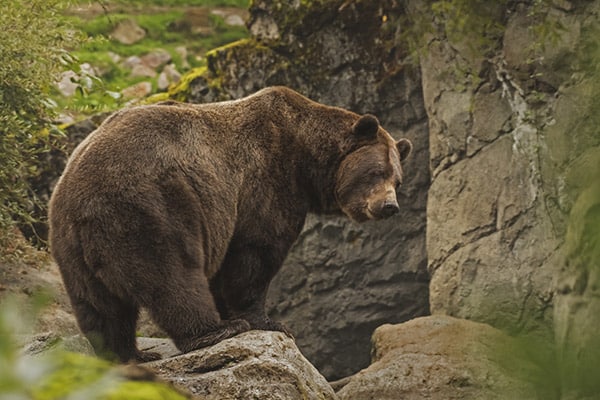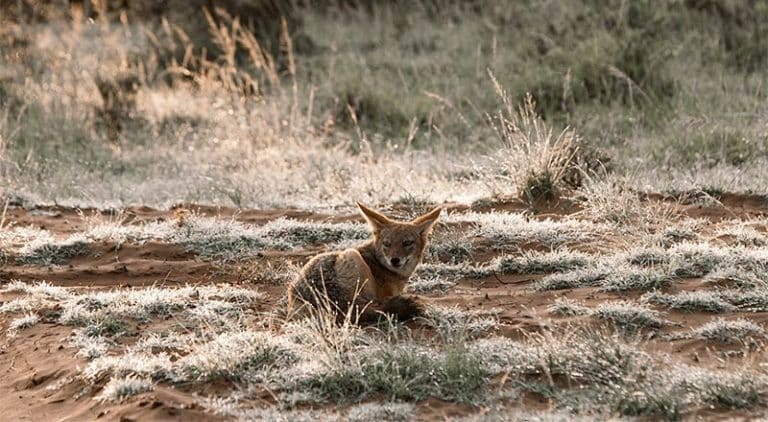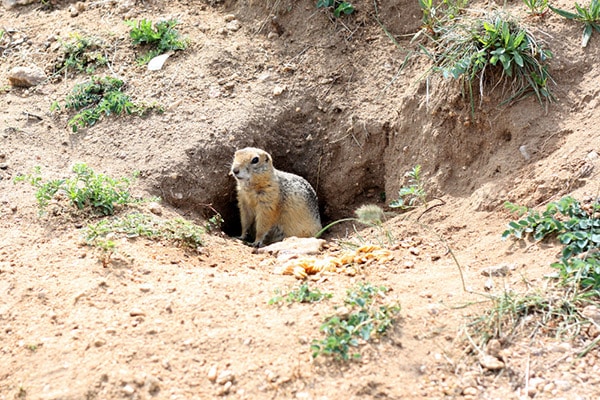Ever found yourself chillin’ in your backyard, sipping on your morning brew, and watching those cheeky squirrels darting about?
And then, outta nowhere, you think, “Is that little furball a dude or a dudette?”
Yeah, I’ve been there. Telling the gents from the ladies in the squirrel world ain’t as straightforward as spotting the difference between a rooster and a hen.
For many people, the easiest way to know the gender of a squirrel is to look for nipples because only the females of this species have them – four to be exact.
But that’s not the only way.
We’re sharing some techniques and characteristics that can help you determine the gender of a squirrel in the wild.
Squirrel Anatomy Basics

Physical differences play a significant role in identifying the gender of squirrels.
Male squirrels tend to have a more pronounced scrotum, particularly during the breeding season, making them easier to spot.
Female squirrels have a smaller genital area, which may require a closer observation.
Fur color variations can sometimes be indicative of a squirrel’s gender, with males typically having more vibrant and varied fur coloration.
Aside from physical characteristics, observing squirrel behavior can also provide valuable clues about their gender.
During mating season, reproductive organs in both male and female squirrels change, making them more visible and distinct.
General Physical Characteristics
To determine the gender of a squirrel, observe their genitalia.
Male squirrels have a penis located near the anus, along with an outwardly visible scrotum and testes.
Female squirrels, on the other hand, have a vulva and nipples.
Males are generally larger and have more vibrant fur coloration, while females have more uniform color, such as gray or brown.

Health and Lifespan
Squirrels generally have a lifespan of 2-7 years, depending on factors such as species, habitat, and predators.
Maintaining good health involves a balanced diet, clean environment, and avoiding injuries from fights or predators.
Variety of Squirrels
There are numerous squirrel species, including tree squirrels, ground squirrels, fox squirrels, gray squirrels, red squirrels, and African pygmy squirrels.
Invasive species, such as gray squirrels, have become problematic for native squirrel populations like the red squirrels.
Notable Behavior Patterns
Squirrels exhibit a range of behaviors, such as mating, territory establishment, and interactions among their own species and with other animals.
They tend to be solitary, but can display communal behavior during mating season.
Squirrels are known to be curious and adaptable, and can with deal various challenges in their environment.
Squirrels in the Wild
In the wild, squirrels can be found in habitats like forests, urban areas, or grasslands, depending on their specific species.
Tree squirrels prefer wooded habitats, while ground squirrels inhabit grassy areas or burrow systems.
Localization of Squirrels
Squirrels live in different regions across the globe, depending on their species.
Certain species are native to North America, while others can be found in Europe, Africa, or Asia.
Natural Predators of Squirrels
Squirrels face many predators in their natural habitats.
These include birds of prey, snakes, larger mammals, and even humans in some cases.
Reproduction in Squirrels
Breeding season varies among squirrel species. Female squirrels have an estrus cycle, during which males engage in a mating chase.
Once a male successfully mates with a female, they separate, and the female gives birth to a litter of juveniles.
Squirrel Diet and Food Source
Squirrels have a diverse diet consisting of nuts, seeds, fruits, insects, and even small bird eggs.
They are known for their ability to find and store food to consume later, which is particularly helpful during winter months.
Squirrel’s Interaction With Other Species
Squirrels often coexist with other species, such as woodchucks, chipmunks, prairie dogs, and marmots.
They may form colonies and share resources or compete for territory.
Sometimes squirrels can be seen engaging in friendly or aggressive interactions with other animals in the wild.
Final Word on Squirrel Gender Identification
Alright, squirrel enthusiasts, we’ve journeyed through the nitty-gritty of squirrel gender ID, and I bet you’re now armed to impress your pals during the next backyard hangout.
Remember, nature’s nuances are subtle, but with a keen eye (and a splash of patience), you can spot the difference between Mr. and Mrs. Squirrel.
So, next time you’re out and about, observing these furry acrobats, throw in your newfound knowledge and bask in the glory of being the local squirrel whisperer.






